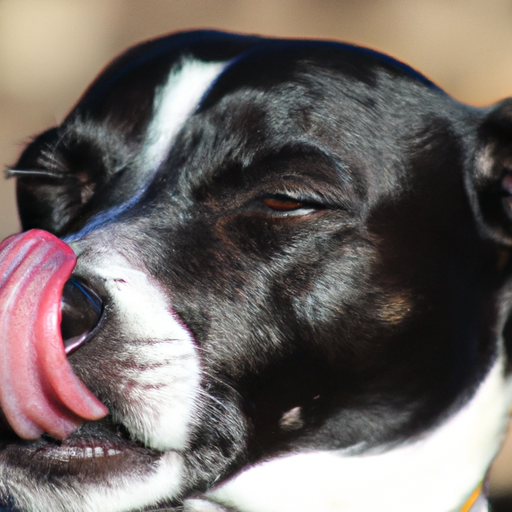How To Clean Dogs Ears?
A pet owner’s journey is filled with rewarding experiences, but it also comes with important responsibilities, one of those being dog hygiene. “How To Clean Dogs Ears” is a product that demystifies this process for you, providing a comprehensive and user-friendly guide to maintaining your dog’s ear hygiene. From understanding when it’s time to clean, how to identify potential issues, to the step-by-step cleaning process, this guide has got you covered. Looking after your four-legged friend’s ears has never been easier with “How To Clean Dogs Ears”.
Understanding Why It’s Important to Clean Your Dog’s Ears
Just like humans, dogs also need their ears cleaned regularly to maintain their ear health. It’s more than just about keeping them fresh and nice smelling; clean ears can help prevent multiple health issues that might affect your furry friend.
Dangers of not cleaning the dog’s ears
When you neglect your dog’s ear hygiene, your dog could potentially suffer from various ailments, like ear infections, ear mites, or even hearing loss. Dirt and wax buildup can create a thriving environment for bacteria, leading to severe infections that can cause discomfort or distress to your pup. If left untreated, these can escalate into serious complications, including permanent hearing loss.
Benefits of regular ear cleaning
On the positive side, regular cleaning keeps the ears dry and devoid of bacteria or yeast. It reduces the chances of infections, ensuring that your pup enjoys excellent auditory health. Regular cleaning also gives you a chance to watch out for early signs of problems, like redness, swelling, and unpleasant odor, helping you address health issues timely.
How often should you clean your dog’s ears
Just like many other pet care tasks, ear cleaning should be done habitually, but not excessively. The frequency depends on the dog breed, age, diet, and overall health. Generally, a “once a month” cleaning works for most dogs. For dogs with floppy ears or frequent ear infections, you might need to do it more often. Always consult with your veterinarian if in doubt.
Knowing When to Clean Your Dog’s Ears
Understanding the right time for cleaning your pup’s ears is just as crucial as knowing how to clean them.
Signs that your dog’s ears need cleaning
Common indicators are frequent scratching, whining when their ears are touched, or the presence of a dark discharge or foul smell. Any of these symptoms should prompt you to clean your dog’s ears or seek veterinary advice.
Understanding the natural cleaning process of a dog’s ear
Dogs’ ears have a natural self-cleaning ability. They have a vertical and horizontal canal that forms an ‘L’ shape, which aids in trapping debris in the ear. This debris naturally moves upwards and outwards due to the migrating skin cells.
Reasons for increased wax production in dogs
Excessive earwax could be due to various factors like breed, lifestyle, or environment. Dogs with hairy or floppy ears tend to produce more earwax. If wax buildup is excessive, it might be an indication of allergy or infection.

Materials Needed to Clean Your Dog’s Ears
Now that you understand why and when to clean your dog’s ears, let’s talk about the tools required.
Choosing the right ear cleaning solution
The first thing you’d need is a vet-recommended ear cleaning solution. Opt for a gentle, dog-friendly solution that does an effective job of cleaning without irritating your dog’s ear.
Use of cotton balls and swabs
Cotton balls are excellent for wiping clean the external parts of your dog’s ears, and tweezers can be useful for gentle removal of large, loose debris. Avoid using cotton swabs deep in your dog’s ear canal as they may push debris further in or damage the eardrum.
Tips to safely clean your dog’s ears
Great care must be taken to avoid any damage to your dog’s ear canal. Never insert any object into the ear canal. Only clean as far as you can see.
Avoiding harmful cleaning items
Never use alcohol or vinegar as this can sting and cause irritation, especially if the ear is inflamed or has open sores.
Preparing Your Dog for Ear Cleaning
Before you start the cleaning, it’s essential to get your dog ready and comfortable with the process.
Creating a calm environment
Choose a quiet, peaceful location to avoid distractions. Try to make this a positive experience for your dog as much as possible.
Correctly holding your dog during the process
Physically reassure your dog during the process. One hand should be used to hold the dog’s head gently yet firmly, while the other hand does the cleaning.
Getting your dog to associate ear cleaning with positive experiences
Try to associate cleaning sessions with something pleasant for the dog, like treats or a favorite game. This way, your dog would start to look forward to these sessions.

The Step by Step Process to Clean Dog’s Ears
Cleaning, if done correctly, is quite straightforward.
How to apply the cleaning solution
Hold your dog’s ear up and fill the ear canal with the cleaning solution. Massage the base of the ear to help the cleaner reach the debris in the ear canal.
How to safely wipe the dog’s ears
Remove the debris you can see in the outer ear with a cotton ball or gauze. Do the same for the other ear.
How to dry the dog’s ears after cleaning
When both ears are cleaned, gently dry them using absorbent cotton balls or a soft towel, leaving no traces of moisture to prevent bacterial growth.
Tips for Dealing with a Resistant Dog
Sometimes, dogs can be resistant to ear cleaning, and you need to handle them tactfully.
Using positive reinforcement techniques
Positive reinforcement like treats and praises during and after cleaning can make your dog more cooperative.
Strategies for handling a difficult dog
If your dog seems too anxious or resistant, try breaking the process into smaller steps spread across different times of the day or week.
Knowing when to get professional help
If all strategies fail, contact a professional. It’s never worth risking your dog’s wellbeing or your relationship with them.
Dealing with Common Challenges in Cleaning Dog Ears
Cleaning your dog’s ears can present some common challenges.
Handling ear infections
If you suspect an ear infection, consult with your vet immediately. Treatments can include medication to clear infection and inflammation.
What to do when your dog’s ear is wounded or bleeding
If there’s any sign of bleeding, stop the cleaning immediately and consult with a vet.
Dealing with stubborn ear wax
Stubborn buildup of earwax can lead to discomfort and health issues for your dog. If regular cleaning doesn’t help, seek a vet’s advice.
Understanding Your Dog’s Ear Anatomy
Knowing a bit about your dog’s ear anatomy can help you clean more effectively and safely.
Difference between human and dog’s ear
Unlike humans, dogs have a more profound and vertical ear canal, making them more prone to accumulation of pathogens and debris, leading to infections.
The role of the different parts of a dog’s ear
Understanding the role and structure of each part of your dog’s ear will ensure you clean them safely without causing harm or discomfort.
Proper Ear Cleaning for Different Dog Breeds
Different dog breeds need different ear cleaning routines.
Special precautions for dogs with floppy ears
Breeds with floppy ears, like Basset Hounds or Cocker Spaniels, are more prone to infections and may need more frequent cleaning.
Cleaning considerations for smaller dog breeds
Small breeds typically have smaller ear canals that can get blocked easily, requiring regular cleaning. However, being delicate, one should be extra careful while cleaning their ears.
Routine check-ups for breeds with higher risk of ear infections
Certain breeds, such as Bulldogs or Poodles, are more prone to ear conditions, making regular vet check-ups essential.
When to See a Veterinarian
Knowing when to seek professional help is critical to maintaining your dog’s ear health.
Recognizing signs of serious ear problems
Serious symptoms such as persistent scratching, whining, or unresponsiveness to noise may signal severe problems and should warrant immediate veterinary attention.
Routine vet checks for ear health
Routine vet checks can help detect problem early and avoid complications.
Importance of professional cleaning in some cases
Some dogs, especially those with a history of ear issues or deformity, might need professional ear cleaning. Always consult with your vet before deciding.
In conclusion, cleaning your dog’s ears should be a routine part of their hygiene regimen. By understanding when, why, and how to clean your dog’s ears safely and effectively, you’re taking a significant step towards ensuring the health and happiness of your furry friend.







